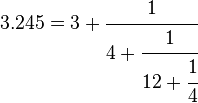As you all probably know, there has been a huge oil spill in the Gulf of Mexico, which started by the drilling rig explosion on April 20th. The spill has been temporarily stopped since July 15th by capping the gushing oil wellhead.
What is really irritating about the spill is how the situation was handled and how the environment was so severely damaged due to corporate and financial arrogance.
Firstly, it is interesting to note how it all began. There are regulations that are designed to prevent this disasters. When oil-drilling companies like BP operate in other countries, they are obligated to have safety switches that shut off the wells. However, during the Bush administration BP was allowed to operate without these expensive safety measures. Mike Papantonio, an environment lawyer explains the situation:
I would recommend you to also take a look at these extensive articles by the New York Times and Newsweek:
http://www.nytimes.com/2010/06/21/us/21blowout.html?_r=1&hp=&pagewanted=all
http://www.newsweek.com/2010/05/29/black-water-rising.html
It is also stated in the articles that BP workers reported bits of rubber gurgling up through the pipe but their supervisors did not do anything about the situation.
But the more frustrating part is how BP is dealing wit the situation after the explosion. While the environment and the wildlife is being absolutely devastated by the oil, the BP is just stirring and mixing the oil in the water.
They have come up with these so-called containment booms to prevent the oil from going to the beaches. The booms are only 13 inches in diameter and the oil goes right underneath them. This is just ridiculous. Watch the following video showing how the oil spill is being dealt with and how the ecosystem is being completely destroyed.
In addition to such stupid pretending to clean the oil, BP is fighting scientists to keep its publicity. To me, this corruption is incredibly frustrating. BP has started buying scientists from different universities. Their lawyers offer scientists a $250/hour pay to the scientists in exchange for working for the company and keeping all their findings from being published. The following BBC report explores the situation:
http://www.bbc.co.uk/news/world-us-canada-10731408
In addition, the corruption in laws and regulations and their implementation is evident in the case of the substances that BP is throwing into the water. In order to hide their mess, BP is adding dispersants into the spill. These are materials that dissolve oil in water. Therefore, not only the dispersants carry the oil all the way to the bottom of the ocean, affecting almost all organisms along the way, but it makes the oil 19,000 times more poisonous! The dispersants carry the oil right into the body of the organisms and it also dissolves the lipids of the cells of their bodies. As if that weren’t enough, BP refuses to realise information on what chemicals they are using! Scientists are helpless and irritated because they do not even know what to expect if they don’t know what BP is doing. This is really disturbing and it speaks of the corruption of the system. BP realise information on some of these ingredients on June 8th and it turns out that they are using the most poisonous and harmful dispersant because it is the cheapest. I highly recommend watching Susan Shaw’s talk on TED about this issue:
As Carl Safina said in this talk, this is all because “for the last at least 30 years, there has been a culture of deregulation that is caused directly by the people who we need to be protected from,buying the government out from under us.” It is evident that something has to be done about this corrupt corporate culture. I do not believe that capitalism and the corporate system have to be gotten rid of altogether. After all, nothing matches the growth and development and the convenience of a free economic system. It is due to this corporate culture that today we drive such safe and technology-advanced cars instead of Ford’s Model-T. What we do need is some serious regulations and their fair implementation. Ultimately, the integrity of the government lies upon the people. After all, as it has repeatedly been shown in history, no one is as strong as the people. And this is getting easier as advances in technology are making the world more and more interconnected and transparent.
I am going to finish off by a poetic quotation that I recently read, in response to how we are ignorantly ruining our environment and ultimately hurting ourselves:
"Only after the last tree has been cut down,
only after the last river has been poisoned,
only after the last fish has been caught,
only then will you realize that money cannot be eaten."







